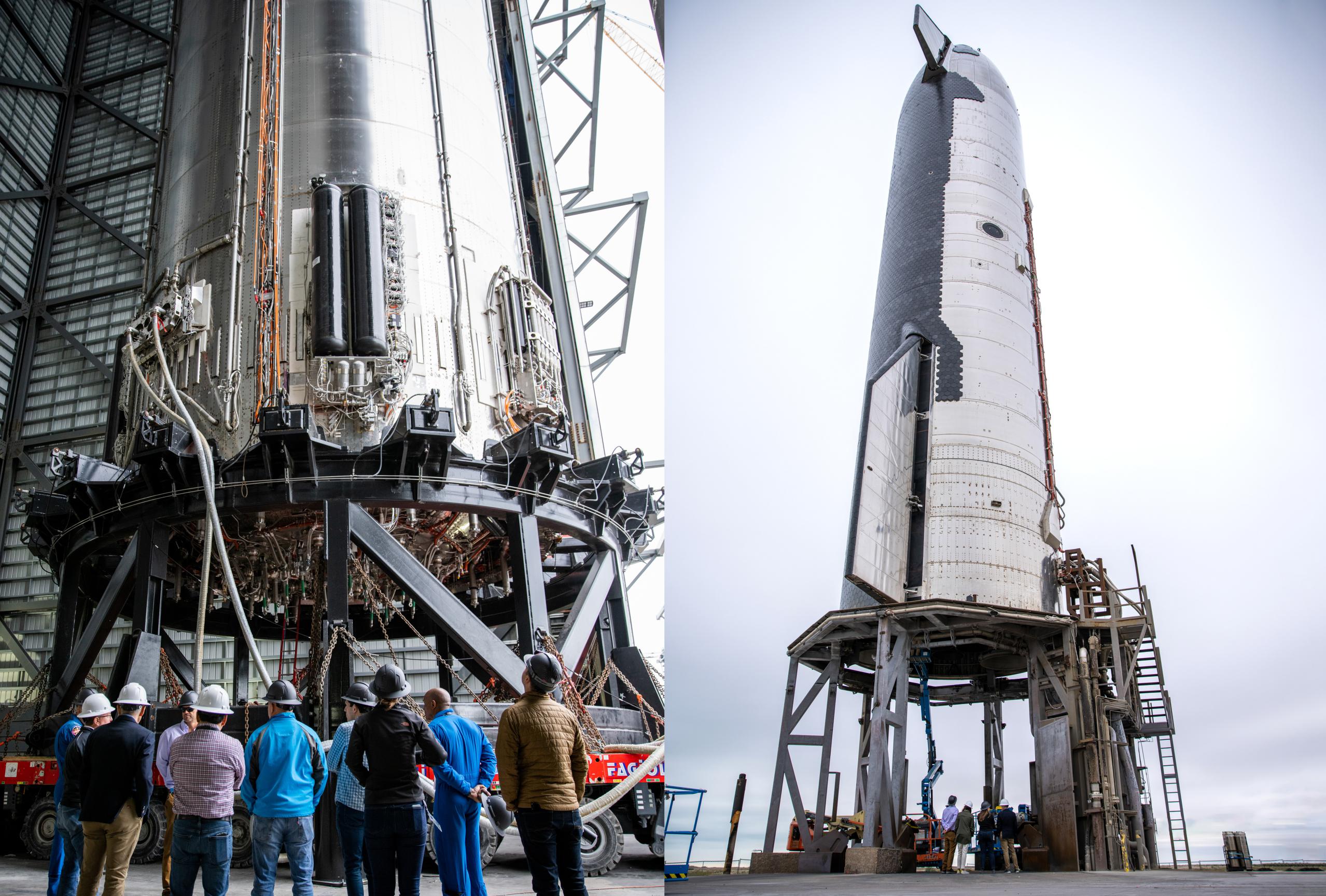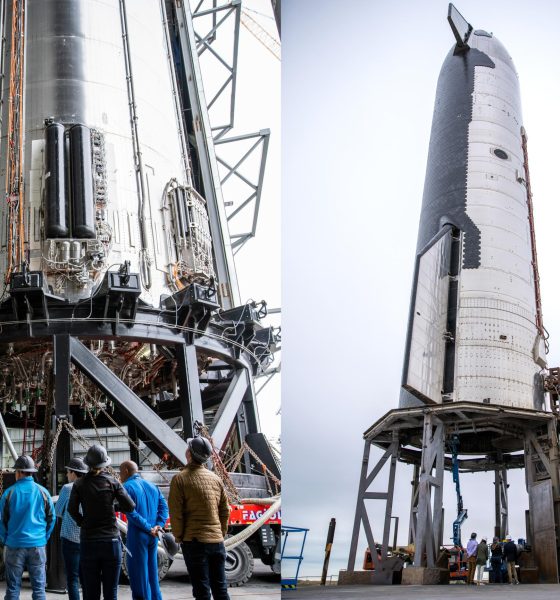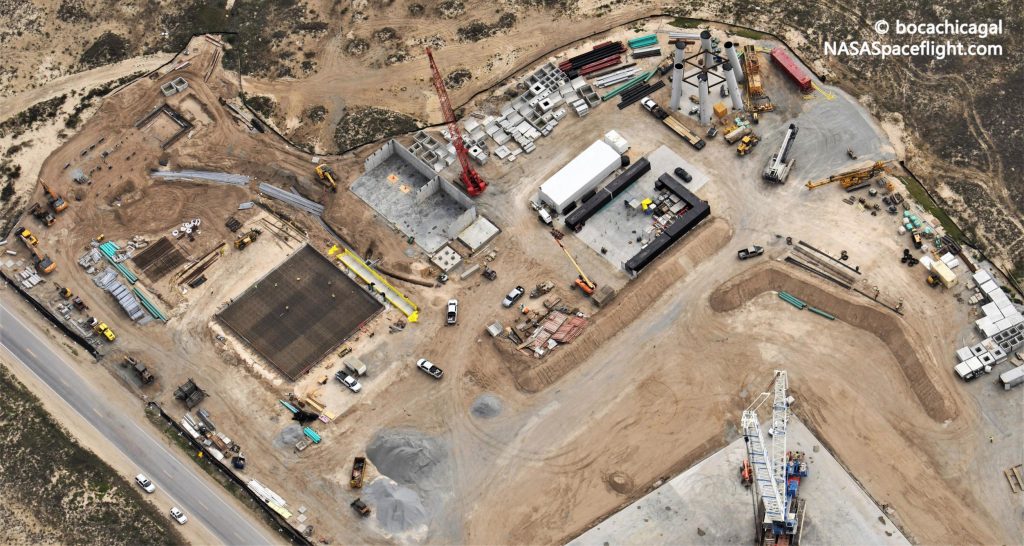

News
NASA Artemis delegation tours SpaceX’s Starship factory and launch pad
Thanks to the failure of Blue Origin’s NASA Human Landing System (HLS) lawsuit, SpaceX and the space agency were finally able to get back to work last month.
Taking advantage of that, NASA astronauts and Artemis Program leaders recently took a tour of SpaceX’s South Texas Starship factory and launch pads – a massive hub of activity that the company has deemed Starbase. In doing so, save for updates from SpaceX and even members of the public over the last 6-9 months, NASA officials were finally able to get up close and personal with the progress SpaceX has made while the space agency was temporarily forced to halt all work on HLS.
While some aspects of SpaceX’s progress towards orbital Starship test flights were hampered by asymmetry between different programs, namely the readiness of Super Heavy and Starbase’s orbital launch site, SpaceX has still made some impressive progress in less than a year. At the start of 2021, Starbase’s lone orbital launch site was effectively a dirt lot and a fraction of the launch mount – the latter constructed well in advance of the rest of the pad. Less than a year later, that orbital launch site – including a skyscraper-sized launch tower, three massive arms, perhaps the most complex launch mount in spaceflight history, and the largest cryogenic tank farm ever built for a rocket – is on the verge of completion.

Several weeks of work are likely needed for SpaceX to finish and qualify the ~146m (~480 ft) launch tower’s ‘chopsticks’ – arms meant to lift and possibly catch Starships and Super Heavy boosters – and quick-disconnect swing arm, which fuels Starship and helps stabilize the rocket. The pad’s massive tank farm has also yet to be filled with any liquid methane fuel (LCH4).
However, that tank farm is complete enough – and filled with hundreds of tanker trucks of liquid oxygen and nitrogen – to begin extensive cryogenic proof testing with Super Heavy Booster 4 (B4), Starship’s first potentially fligthworthy booster. That process began on December 17th and a second cryogenic proof followed on December 21st. On the 22nd, SpaceX continued to expand the ambition of its booster testing and filled Super Heavy B4 more than any booster before it, loading it with two or three thousand tons (4.4M-6.6M lb) of cryogenic liquids in about two hours. There are signs that most of that liquid was actually liquid oxygen (LOx) – the oxidizer Starship will be filled with before launch – and both sides of the tank farm were visibly active.
In other words, once SpaceX is confident that the tank farm is safe to store liquid methane, the first Super Heavy wet dress rehearsals and static fire tests – eventually simulating full thrust just before liftoff – could begin almost immediately. Once the tower’s three arms are at least partially functional, SpaceX will also be able to install a Starship on top of Super Heavy for the second time and test a fully-integrated two-stage Starship launch vehicle for the first time, paving the way for the first orbital-velocity launch attempt as soon as as the FAA grants a license.
Though SpaceX technically hasn’t started building a prototype of the actual Starship Moon lander that will returns humans to the lunar surface, every single Starship and Super Heavy booster it builds and tests mature’s the foundation of that crewed variant’s design, as well as the fleet of boosters and ships that will be required to fuel it in orbit. By all appearances, Starship S20 – the first completed orbital-class prototye – has passed all the tests thrown at it and is ready for the program’s first orbital-velocity launch attempt. If the speed of recent testing continues, Super Heavy Booster 4 may not be far behind it.

Elon Musk
Elon Musk’s X will start using a Tesla-like software update strategy
The initiative seems designed to accelerate updates to the social media platform, while maintaining maximum transparency.

Elon Musk’s social media platform X will adopt a Tesla-esque approach to software updates for its algorithm.
The initiative seems designed to accelerate updates to the social media platform, while maintaining maximum transparency.
X’s updates to its updates
As per Musk in a post on X, the social media company will be making a new algorithm to determine what organic and advertising posts are recommended to users. These updates would then be repeated every four weeks.
“We will make the new 𝕏 algorithm, including all code used to determine what organic and advertising posts are recommended to users, open source in 7 days. This will be repeated every 4 weeks, with comprehensive developer notes, to help you understand what changed,” Musk wrote in his post.
The initiative somewhat mirrors Tesla’s over-the-air update model, where vehicle software is regularly refined and pushed to users with detailed release notes. This should allow users to better understand the details of X’s every update and foster a healthy feedback loop for the social media platform.
xAI and X
X, formerly Twitter, has been acquired by Elon Musk’s artificial intelligence startup, xAI last year. Since then, xAI has seen a rapid rise in valuation. Following the company’s the company’s upsized $20 billion Series E funding round, estimates now suggest that xAI is worth tens about $230 to $235 billion. That’s several times larger than Tesla when Elon Musk received his controversial 2018 CEO Performance Award.
As per xAI, the Series E funding round attracted a diverse group of investors, including Valor Equity Partners, Stepstone Group, Fidelity Management & Research Company, Qatar Investment Authority, MGX, and Baron Capital Group, among others. Strategic partners NVIDIA and Cisco Investments also continued support for building the world’s largest GPU clusters.
News
Tesla FSD Supervised wins MotorTrend’s Best Driver Assistance Award
The decision marks a notable reversal for the publication from prior years, with judges citing major real-world improvements that pushed Tesla’s latest FSD software ahead of every competing ADAS system.

Tesla’s Full Self-Driving (Supervised) system has been named the best driver-assistance technology on the market, earning top honors at the 2026 MotorTrend Best Tech Awards.
The decision marks a notable reversal for the publication from prior years, with judges citing major real-world improvements that pushed Tesla’s latest FSD software ahead of every competing ADAS system. And it wasn’t even close.
MotorTrend reverses course
MotorTrend awarded Tesla FSD (Supervised) its 2026 Best Tech Driver Assistance title after extensive testing of the latest v14 software. The publication acknowledged that it had previously criticized earlier versions of FSD for erratic behavior and near-miss incidents, ultimately favoring rivals such as GM’s Super Cruise in earlier evaluations.
According to MotorTrend, the newest iteration of FSD resolved many of those shortcomings. Testers said v14 showed far smoother behavior in complex urban scenarios, including unprotected left turns, traffic circles, emergency vehicles, and dense city streets. While the system still requires constant driver supervision, judges concluded that no other advanced driver-assistance system currently matches its breadth of capability.
Unlike rival systems that rely on combinations of cameras, radar, lidar, and mapped highways, Tesla’s FSD operates using a camera-only approach and is capable of driving on city streets, rural roads, and freeways. MotorTrend stated that pure utility, the ability to handle nearly all road types, ultimately separated FSD from competitors like Ford BlueCruise, GM Super Cruise, and BMW’s Highway Assistant.
High cost and high capability
MotorTrend also addressed FSD’s pricing, which remains significantly higher than rival systems. Tesla currently charges $8,000 for a one-time purchase or $99 per month for a subscription, compared with far lower upfront and subscription costs from other automakers. The publication noted that the premium is justified given FSD’s unmatched scope and continuous software evolution.
Safety remained a central focus of the evaluation. While testers reported collision-free operation over thousands of miles, they noted ongoing concerns around FSD’s configurable driving modes, including options that allow aggressive driving and speeds beyond posted limits. MotorTrend emphasized that, like all Level 2 systems, FSD still depends on a fully attentive human driver at all times.
Despite those caveats, the publication concluded that Tesla’s rapid software progress fundamentally reshaped the competitive landscape. For drivers seeking the most capable hands-on driver-assistance system available today, MotorTrend concluded Tesla FSD (Supervised) now stands alone at the top.
News
Elon Musk’s Grokipedia surges to 5.6M articles, almost 79% of English Wikipedia
The explosive growth marks a major milestone for the AI-powered online encyclopedia, which was launched by Elon Musk’s xAI just months ago.

Elon Musk’s Grokipedia has grown to an impressive 5,615,201 articles as of today, closing in on 79% of the English Wikipedia’s current total of 7,119,376 articles.
The explosive growth marks a major milestone for the AI-powered online encyclopedia, which was launched by Elon Musk’s xAI just months ago. Needless to say, it would only be a matter of time before Grokipedia exceeds English Wikipedia in sheer volume.
Grokipedia’s rapid growth
xAI’s vision for Grokipedia emphasizes neutrality, while Grok’s reasoning capabilities allow for fast drafting and fact-checking. When Elon Musk announced the initiative in late September 2025, he noted that Grokipedia would be an improvement to Wikipedia because it would be designed to avoid bias.
At the time, Musk noted that Grokipedia “is a necessary step towards the xAI goal of understanding the Universe.”
Grokipedia was launched in late October, and while xAI was careful to list it only as Version 0.1 at the time, the online encyclopedia immediately earned praise. Wikipedia co-founder Larry Sanger highlighted the project’s innovative approach, noting how it leverages AI to fill knowledge gaps and enable rapid updates. Netizens also observed how Grokipedia tends to present articles in a more objective manner compared to Wikipedia, which is edited by humans.
Elon Musk’s ambitious plans
With 5,615,201 total articles, Grokipedia has now grown to almost 79% of English Wikipedia’s article base. This is incredibly quick, though Grokipedia remains text-only for now. xAI, for its part, has now updated the online encyclopedia’s iteration to v0.2.
Elon Musk has shared bold ideas for Grokipedia, including sending a record of the entire knowledge base to space as part of xAI’s mission to preserve and expand human understanding. At some point, Musk stated that Grokipedia will be renamed to Encyclopedia Galactica, and it will be sent to the cosmos.
“When Grokipedia is good enough (long way to go), we will change the name to Encyclopedia Galactica. It will be an open source distillation of all knowledge, including audio, images and video. Join xAI to help build the sci-fi version of the Library of Alexandria!” Musk wrote, adding in a later post that “Copies will be etched in stone and sent to the Moon, Mars and beyond. This time, it will not be lost.”








